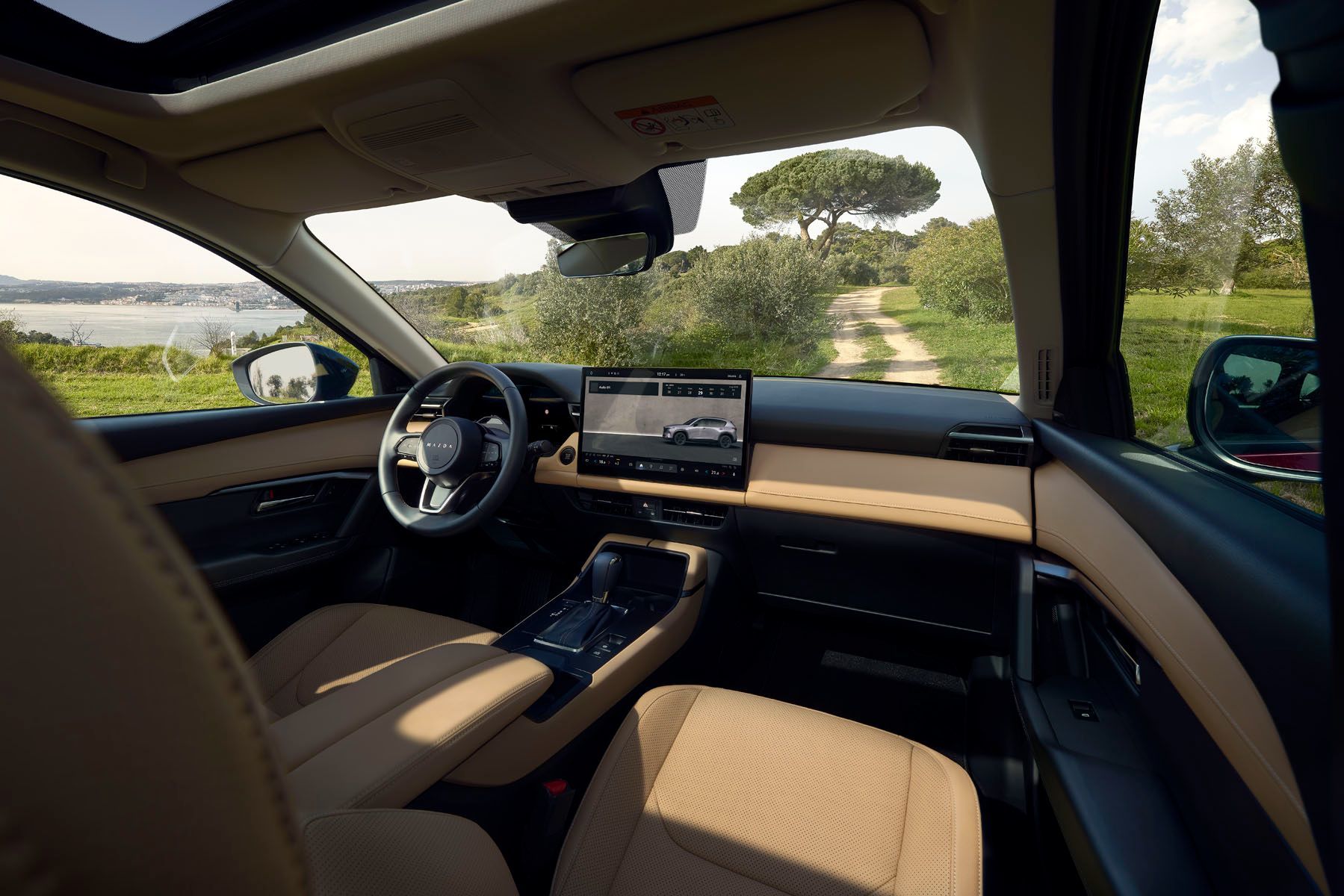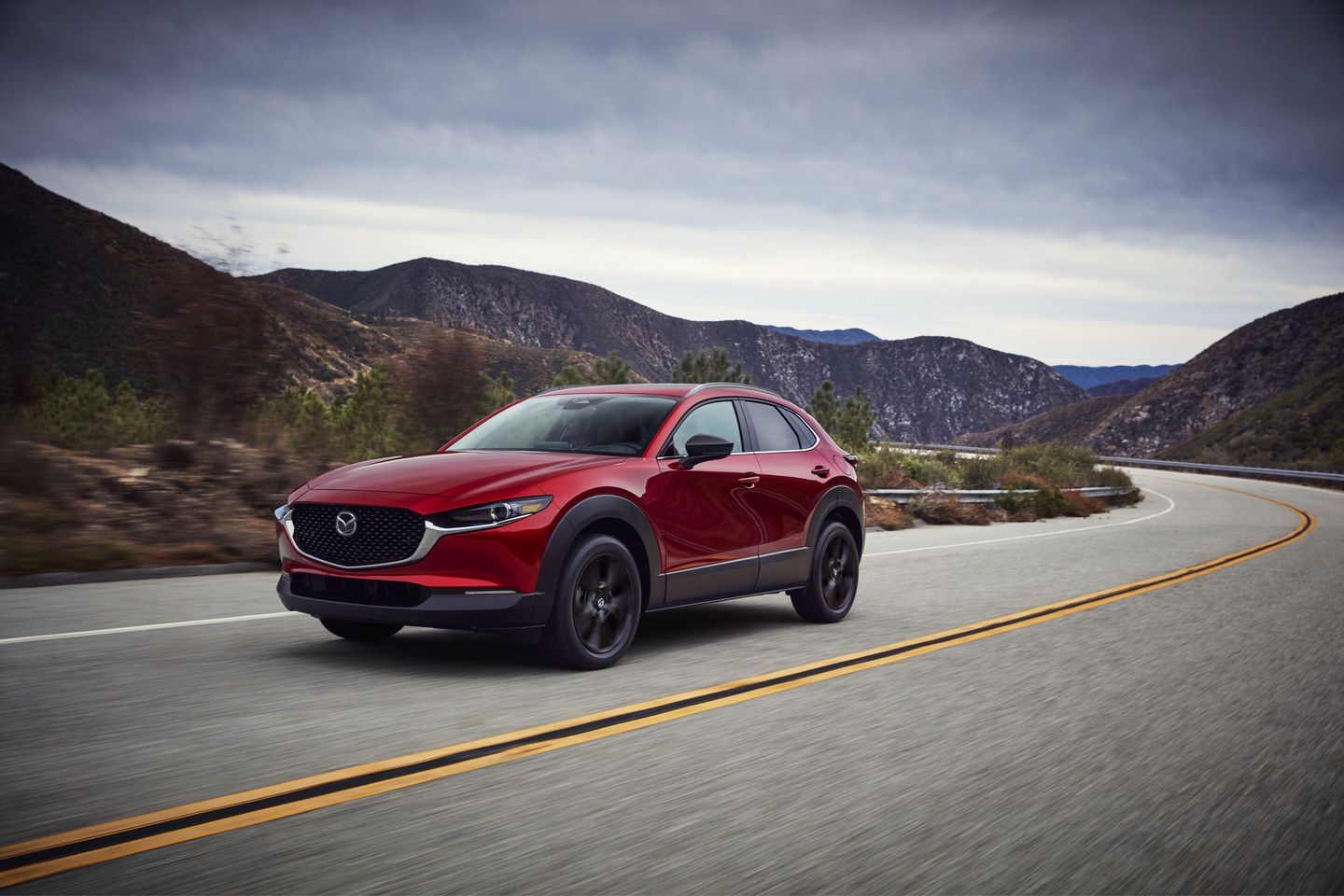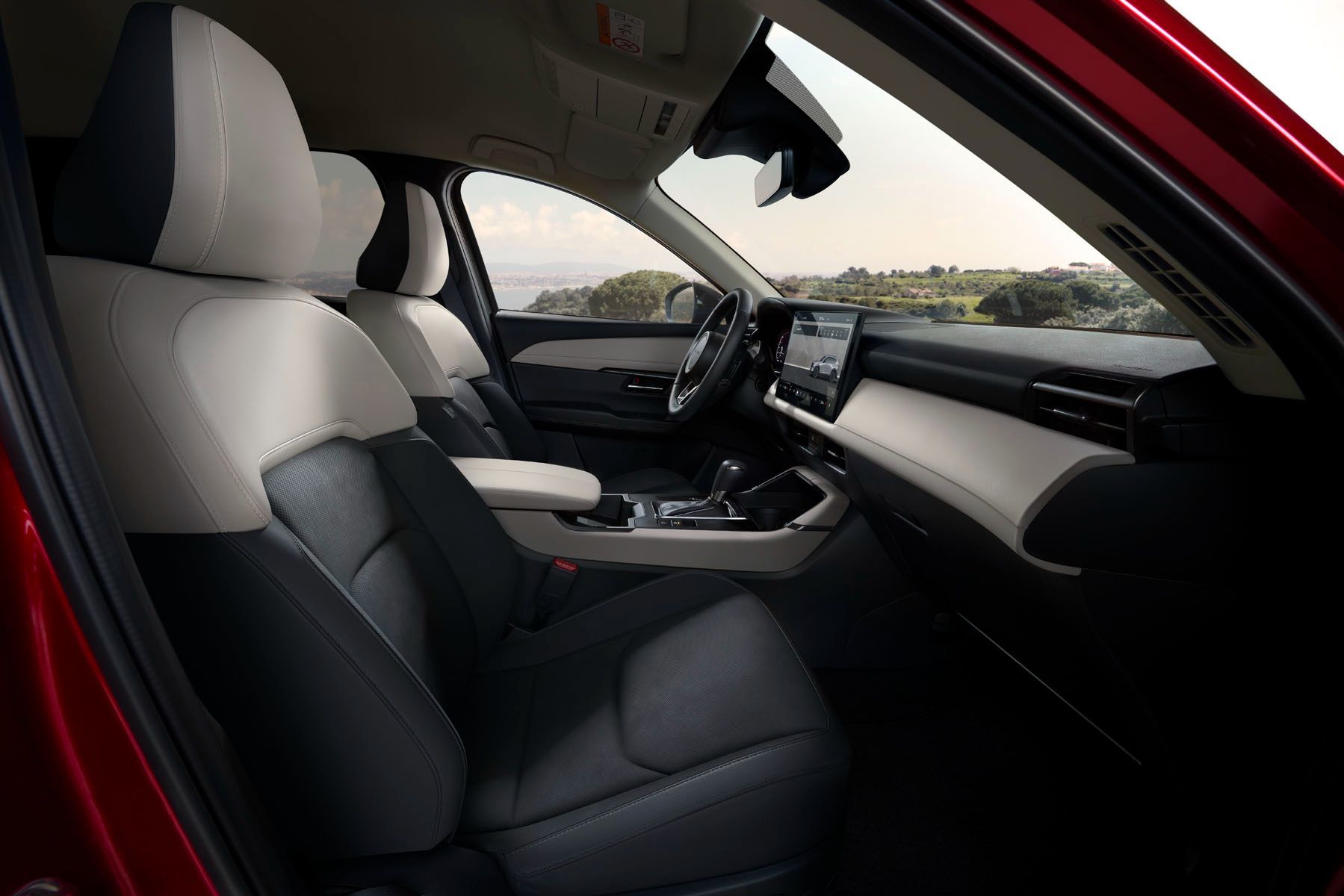What the 2026 CX-5's Google Built-In System Means for Tech-Savvy BC Families
October 15 2025,

The 2026 Mazda CX-5, arriving Spring 2026, introduces the largest touchscreen ever installed in a Mazda vehicle—a 15.6-inch integrated display with Google built-in. This represents a substantial shift from traditional automotive infotainment systems toward smartphone-like functionality and connectivity. For Metro Vancouver families managing complex schedules, navigating unpredictable traffic, and expecting devices to work together seamlessly, these changes address specific frustrations that older systems create.
Google built-in differs from simply running Android Auto through your phone. The system integrates directly into the vehicle, providing always-on connectivity, native Google services, and the ability to update and improve over time without hardware replacement. Understanding what this means in practical terms helps determine whether the technology justifies consideration when the 2026 CX-5 becomes available.
The 15.6-Inch Display: Size With Purpose
Mazda's previous largest touchscreen measured 10.25 inches. The 2026 CX-5's 15.6-inch display represents a 52% increase in screen area, but the expansion serves functional rather than purely aesthetic purposes.
Improved Map Visibility
When using navigation, larger maps display more of your route simultaneously. This reduces the need to zoom in and out when checking upcoming turns or evaluating alternate routes. For families traveling from Burnaby to Whistler, the ability to see the entire Sea-to-Sky Highway route at once—with traffic conditions, points of interest, and upcoming exits visible without interaction—improves situational awareness and reduces distraction.
Split-Screen Functionality
The expanded real estate enables split-screen layouts: navigation on one side, music controls or vehicle information on the other. Parents managing routes while kids control entertainment options benefit from this parallel access—no more switching between screens to adjust both simultaneously.
Reduced Eye Movement
Larger touch targets require less precision, reducing the time and attention needed to interact with controls while driving. The difference between tapping a 10 mm target versus a 15 mm target might seem minor, but it translates into faster, more confident inputs that require less visual focus away from the road.
Google Maps Integration: Live Traffic and Real-World Updates
The 2026 CX-5's navigation relies on Google Maps with continuously updated traffic data rather than embedded maps that require periodic updates. This fundamental architectural difference changes how the system handles routing.
Real-Time Traffic Adaptation
Google Maps processes live traffic data from millions of devices, identifying slowdowns, accidents, and congestion as they develop. When you're driving from Burnaby toward downtown Vancouver and traffic suddenly backs up on the Iron Workers Memorial Bridge, the system detects the delay and suggests alternatives—potentially rerouting you through another crossing before you reach the congestion.
Traditional embedded navigation systems update traffic data less frequently and with lower geographical resolution. By the time they detect major slowdowns, you're often already committed to the affected route.
Accurate Business Information
Restaurant hours, gas station locations, store closures—Google Maps maintains this information through user contributions and business updates. When you search for a specific store in Richmond or a restaurant in North Vancouver, the system shows current hours, live parking availability (where supported), and accurate contact information. Embedded navigation systems struggle to maintain this level of detail, often directing you to businesses that have closed or showing outdated hours.
Place Discovery
The system understands natural language search: "coffee near me," "family restaurants open now," or "gas stations along my route." Google's search capabilities exceed what traditional automotive systems offer, making it easier to find services spontaneously during trips without pulling out your phone.
Gemini AI Assistant: Natural Voice Control
The 2026 CX-5 will include access to Gemini, Google's AI assistant designed specifically for cars with Google built-in. This enables voice interaction that understands context and follow-up questions.
Conversational Commands
Traditional voice systems require precise phrasing: "Navigate to 123 Main Street, Vancouver." Gemini processes natural speech: "Take me to that Italian restaurant we went to last month" or "Find a gas station with the cheapest prices between here and Whistler."
The system remembers conversation context, allowing follow-up questions without repeating information: "How's traffic on Highway 1?" followed by "What about Highway 99?" The assistant understands "Highway 99" refers to an alternate route to the same destination.
Multi-Step Requests
You can issue complex commands: "Add milk to my shopping list, set the temperature to 21 degrees, and play some jazz music." The assistant processes all three requests without requiring separate commands. This reduces interaction time and keeps attention focused on driving.
Integration With Home Devices
For families with Google Home devices, Gemini can control smart home functions from the vehicle. As you drive home from work, a voice command can adjust your thermostat, unlock doors (if equipped with smart locks), or turn on lights—coordinating your arrival without requiring separate apps or phone interaction.
Google Play Store: Expandable Functionality
Unlike closed automotive systems, Google built-in provides access to the Google Play Store for compatible in-vehicle apps. This opens functionality beyond what Mazda pre-installs.
Music and Media Services
Instead of relying solely on Bluetooth phone streaming, apps like Spotify, Apple Music (through Android compatibility), Audible, and podcast platforms run natively on the vehicle system. This reduces phone battery drain, provides better integration with vehicle controls, and allows multiple family members to access their own accounts without phone connection requirements.
Parking and Charging Apps
Apps for finding parking, paying for parking remotely, or locating electric vehicle charging stations (when the hybrid CX-5 arrives in 2027) integrate directly into the navigation system rather than requiring phone references.
Future Capability
As Mazda approves new apps for the platform, functionality expands without requiring hardware updates. This future-proofs the system against evolving technology and user expectations—a significant advantage over fixed-functionality embedded systems.
Over-the-Air Updates: Continuous Improvement

Traditional navigation systems require dealership visits or SD card updates to receive new mapping data or software improvements. The 2026 CX-5's Google built-in system updates automatically via cellular connection.
Map Updates
New roads, changed traffic patterns, updated business information—all download automatically without user action. When new developments open in Burnaby or Richmond, they appear in the system without waiting for annual map releases.
Feature Additions
Google can add new capabilities to existing vehicles through software updates. New voice commands, improved routing algorithms, additional app integrations—all can deploy to the vehicle remotely. This maintains feature parity with newer vehicles and extends the functional lifespan of the infotainment system.
Security Patches
Connected systems require ongoing security maintenance. Over-the-air updates address vulnerabilities as they're discovered, maintaining system security without requiring dealership visits.
Privacy and Data Considerations
Google built-in systems collect data to provide personalized experiences, traffic updates, and service improvements. Understanding what data is collected and how it's used helps families make informed decisions.
The system collects location data to provide navigation and traffic information, voice commands to improve recognition accuracy, and usage patterns to personalize recommendations. Google's privacy policies govern this data collection, with controls available through Google account settings.
Families concerned about data collection can limit certain features or use guest mode for basic functionality without personalization. These controls balance convenience against privacy preferences based on individual comfort levels.
Practical Use Cases for Metro Vancouver Families
School Run With Activity Coordination
Morning school drop-offs with after-school activity pickups require coordination. Set navigation to school, add a reminder for the afternoon pickup location, and queue your morning podcast—all through voice commands while backing out of the driveway. The system manages the schedule while you focus on driving through Burnaby's school zones.
Weekend Whistler Trips
"Navigate to Whistler Village" starts route guidance with live traffic monitoring. If Highway 99 shows congestion near Squamish, the system suggests departure time adjustments or confirms current delays. Once underway, ask "Find a coffee shop at the halfway point" to locate stops without interrupting navigation. On return, say "How's traffic heading home?" to evaluate whether stopping for dinner makes sense given current Highway 99 conditions.
Multi-Stop Errands
"Add stops at the grocery store, hardware store, and dry cleaner" plans an efficient route through multiple locations. The system optimizes the order based on current traffic, store hours, and route efficiency—reducing total trip time and fuel consumption compared to arbitrary stop sequencing.
Emergency Situations
"Find the nearest hospital" or "Call 911" provide immediate access to critical services through voice commands, faster than unlocking your phone and searching manually. The system can share your exact location with emergency services automatically.
Comparison With Traditional Automotive Systems
|
Feature |
Google Built-In (2026 CX-5) |
Traditional Embedded Systems |
|---|---|---|
|
Map Updates |
Automatic via cellular |
Manual SD card or dealer visit |
|
Traffic Data |
Real-time, millions of sources |
Periodic updates, limited sources |
|
Voice Recognition |
Natural language, contextual |
Command-based, rigid phrasing |
|
App Expansion |
Google Play Store access |
Fixed functionality |
|
Search Capabilities |
Google search integration |
Limited database |
|
Future Updates |
Over-the-air improvements |
Hardware-dependent |
The comparison shows that Google built-in prioritizes connectivity, flexibility, and continuous improvement over the self-contained approach of traditional systems.
Learning Curve and User Adaptation
Families accustomed to Apple CarPlay or traditional Mazda Connect will face a brief learning period. The interface follows smartphone conventions—swiping, tapping, and voice interaction patterns that match phone usage. This familiarity accelerates adoption, particularly for families already using Android devices or Google services.
The 15.6-inch touchscreen supports customizable home screens, letting you arrange frequently used functions for quick access. After initial setup, most families find the system requires less interaction than traditional automotive interfaces thanks to improved voice recognition and predictive suggestions.
When Will the 2026 Mazda CX-5 be Available
The all-new 2026 Mazda CX-5 will be available in Spring 2026. Beyond the Google built-in technology, the redesign includes a 114 mm wheelbase increase for enhanced passenger and cargo space, standard i-Activ all-wheel drive, and a 2.5 L Skyactiv-G engine producing 187 hp and 185 lb-ft of torque. A hybrid powertrain with Mazda Hybrid System technology will follow in 2027, offering enhanced efficiency for families prioritizing fuel economy.
The combination of expanded interior space, advanced connectivity, and Mazda's refined driving dynamics positions the 2026 CX-5 as a substantial evolution of Canada's best-selling Mazda model. Visit Metrotown Mazda in Burnaby when the vehicle arrives to experience how Google built-in technology, the 15.6-inch display, and Gemini AI assistant integrate into daily driving for British Columbia families.





